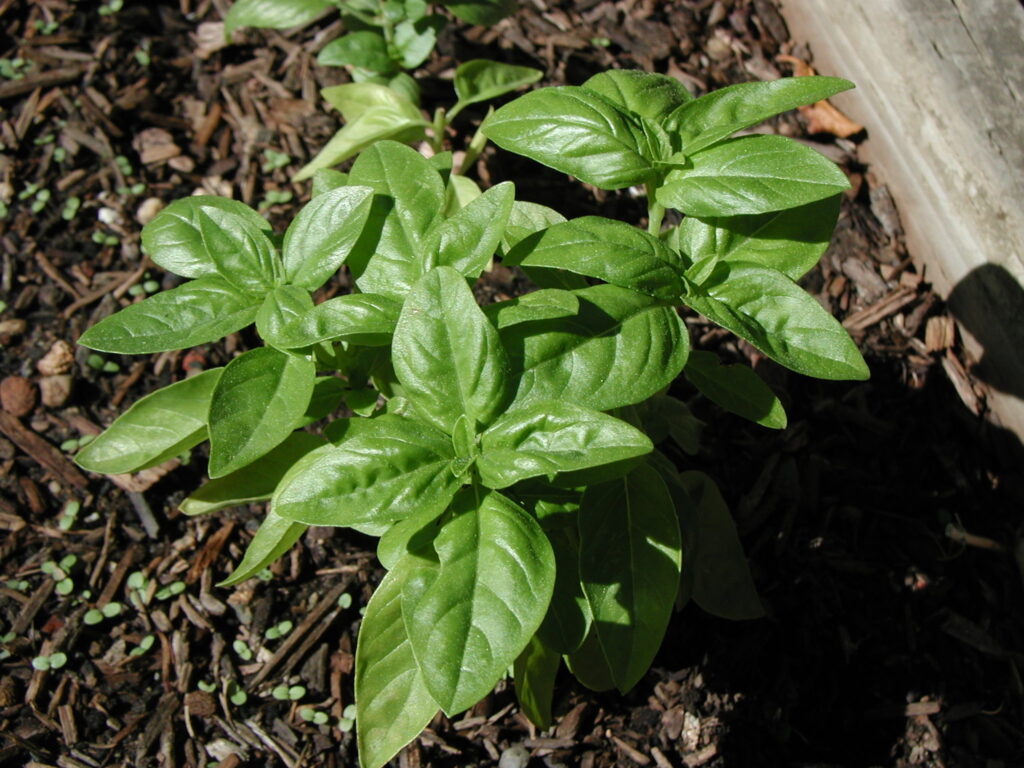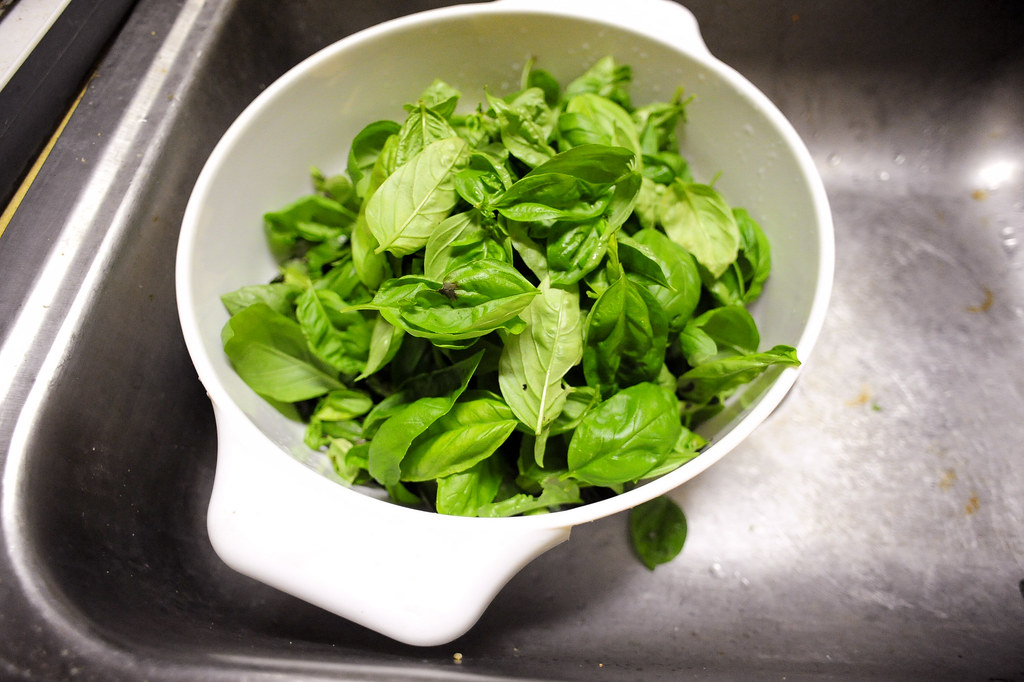Basil (Ocimum basilicum)
Basil’s pungent flavor enhances any summer garden recipe. And you can choose from lots of varieties, including lemon, cinnamon, and anise-flavored types. Basil also comes in a variety of shapes and colors; you can plant varieties that are low-growing, stocky, or tall, with variegated, crinkled, purple, green, or smooth leaves. The plants can grow up to 60 cm (2 feet) tall and 20 cm (8 inches) wide.
Growing Guide for Basil
Soil preparation
You can grow basil in any well-drained soil amended with plenty of organic matter.

Planting
Make sure you plant basil where it will get full sun. Start basil seeds indoors 6 weeks before your last expected frost. Plant the transplants outdoors after the danger of frost has passed and when soil temperature averages 10°C (50°F) or higher.
Spacing
If you’re growing small-leaved basil, place the plants 15-20 cm (6 to 8) inches apart. Varieties with large leaves need 30-45 cm (1 to 1½ feet) between plants.
Special hint: Mulching the area after the seedlings have shot up helps to keep the ground moist and warm and discourages weeds. But make sure you mulch after the ground has warmed up because basil roots need heat.
Harvesting Hints
Begin harvesting basil as soon as the plants have several pairs of leaves. If you harvest frequently, you’ll help encourage your plants to produce new growth – which, in turn, will give you even more basil to harvest. You can keep harvesting basil up until the first frost. After harvesting, wrap dry foliage in paper towels and store it in resealable plastic bags in the fridge.

Trivia: In Italy, basil has been and still is a sign of love. According to tradition, if a man gives a woman a sprig of basil, she will fall in love with him and never leave him. Today, he’d probably have better luck if he made her pesto and served it over pasta with salad, bread, and a little wine – and then did the dishes afterward.